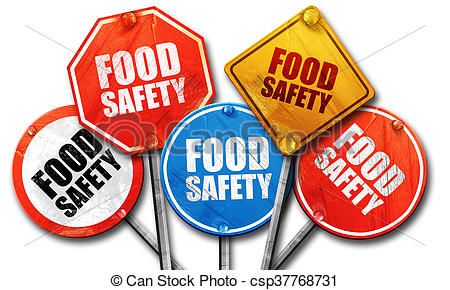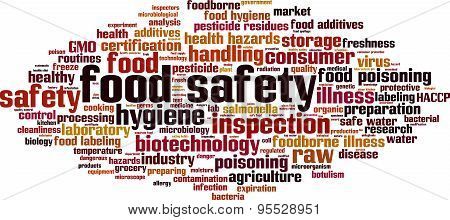The Measures Of Foodstuffs Welfare
May 26, 2019 • 27 views
Food Safety refers to handling, preparing and storing food in a way to best reduce the risk of individuals becoming sick from foodborne illnesses.It is a global concern that covers a variety of different areas of everyday life. This includes a number of routines that should be followed to avoid potentially severe health hazards.
We're going to do everything possible to make sure that food safety is always paramount, and that we work with the identity as aggressively as we can to make sure that we're paying attention to the food-safety issues. - Mike Johanns
Many countries have food safety systems from farm to table. Everybody involved in the food supply is required to follow standard food safety procedures. You would think that everyone involved with food would not want people to get sick from it. - Marion Nestle
The principles of food safety aim to prevent food from becoming contaminated and causing food poisoning. This is achieved through a variety of different avenues, some of which are:
Properly cleaning and sanitising all surfaces, equipment and utensils
Maintaining a high level of personal hygiene, especially hand-washing
Storing, chilling and heating food correctly with regards to temperature, environment and equipment
Implementing effective pest control
Comprehending food allergies, food poisoning and food intolerance
Regardless of why you are handling food, whether as part of your job or cooking at home, it is essential to always apply the proper food safety principles. Any number of potential food hazards exist in a food handling environment, many of which carry with them serious consequences.

Food safety is important as it helps to protect consumer from the risk of food borne illnesses. It also helps to prevent consumers from risks of health –related conditions such as allergy and even death. It also protects food processing establishments from product recalls which results in financial losses due to unsafe products. Other issues due to unsafe products which can impact a business include: rejected products, possible lawsuits and business closure by the public health authorities due to reports of unsafe product sold to the general public.
ESSENTIALS FOR HANDLING FOOD SAFETY
Preparation
Always wash hands with warm water and soap for 20 seconds before and after handling food. Keep raw meat, poultry, fish, and their juices away from other food. After cutting raw meats, wash cutting board, utensils, and countertops with hot, soapy water. Cutting boards, utensils, and countertops can be sanitized by using a solution of 1 tablespoon of unscented, liquid chlorine bleach in 1 gallon of water. Marinate meat and poultry in a covered dish in the refrigerator.
Shopping
Purchase refrigerated or frozen items after selecting your non-perishables. Never choose meat or poultry in packaging that is torn or leaking. Do not buy food past "Sell-By," "Use-By," or other expiration dates.
Cooking
Cook all raw beef, pork, lamb and veal steaks, chops, and roasts to a minimum internal temperature of 145 °F (62.8 ºC) as measured with a food thermometer before removing meat from the heat source. For safety and quality, allow meat to rest for at least three minutes before carving or consuming. For reasons of personal preference, consumers may choose to cook meat to higher temperatures.
Serving
When serving food at a buffet, keep food hot with chafing dishes, slow cookers, and warming trays. Keep food cold by nesting dishes in bowls of ice or use small serving trays and replace them often. Perishable food should not be left out more than 2 hours at room temperature—1 hour when the temperature is above 90 °F (32.2 ºC).
Thawing
Refrigerator: The refrigerator allows slow, safe thawing. Make sure thawing meat and poultry juices do not drip onto other food.
Cold Water: For faster thawing, place food in a leak-proof plastic bag. Submerge in cold tap water. Change the water every 30 minutes. Cook immediately after thawing.
Microwave: Cook meat and poultry immediately after microwave thawing.
Refreezing
Meat and poultry defrosted in the refrigerator may be refrozen before or after cooking. If thawed by other methods, cook before refreezing.
Storage
Cook or freeze fresh poultry, fish, ground meats, and variety meats within 2 days; other beef, veal, lamb, or pork, within 3 to 5 days. Perishable food such as meat and poultry should be wrapped securely to maintain quality and to prevent meat juices from getting onto other food. To maintain quality when freezing meat and poultry in its original package, wrap the package again with foil or plastic wrap that is recommended for the freezer. Canned foods are safe indefinitely as long as they are not exposed to freezing temperatures, or temperatures above 90 °F. If the cans look ok, they are safe to use. Discard cans that are dented, rusted, or swollen. High-acid canned food (tomatoes, fruits) will keep their best quality for 12 to 18 months; low-acid canned food (meats, vegetables) for 2 to 5 years.
Leftovers
Discard any food left out at room temperature for more than 2 hours—1 hour if the temperature was above 90 °F (32.2 ºC). Place food into shallow containers and immediately put in the refrigerator or freezer for rapid cooling. Use cooked leftovers within 4 days.

